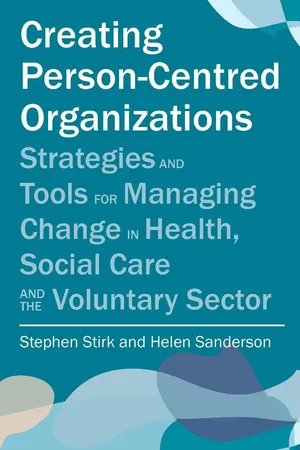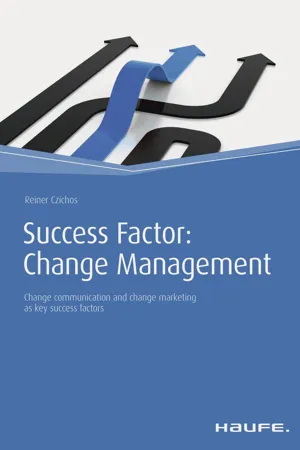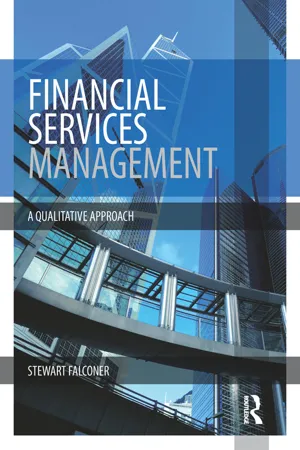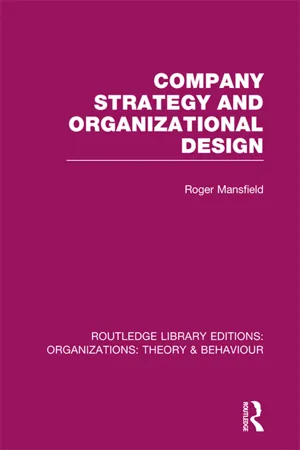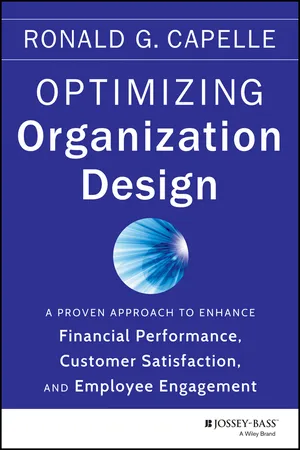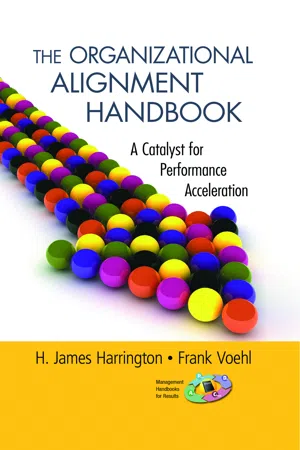Business
Organisation Design
Organization design refers to the process of structuring and arranging the various components of a business to achieve its objectives. This includes determining reporting relationships, decision-making processes, and allocation of responsibilities. Effective organization design aims to optimize efficiency, communication, and overall performance within the company.
Written by Perlego with AI-assistance
Related key terms
Related key terms
1 of 4
Related key terms
1 of 3
12 Key excerpts on "Organisation Design"
- eBook - ePub
Creating Person-Centred Organisations
Strategies and Tools for Managing Change in Health, Social Care and the Voluntary Sector
- Stephen Stirk, Helen Sanderson(Authors)
- 2012(Publication Date)
- Jessica Kingsley Publishers(Publisher)
We start with a generic description of Organisation Design and some of its typical characteristics; think about what this means in terms of person-centred organisations; look at how to assess your current organisation and decide how to move forward to achieve the design you want. Throughout we illustrate how person-centred practices can be used, and end with exercises that can help you get started.What is Organisation Design, and what does it mean in person-centred organisations?
In the last chapter we focused on vision, mission and values, and the overall process of business strategy development. With these in place, you need to ensure that your organisation is designed to achieve them.Here are a couple of definitions of Organisation Design:• The continual design and alignment of organisational structures, systems, processes and culture to achieve business objectives through people.46• The goal of Organisation Design is to fashion a set of formal structures and processes that, together with an appropriate informal operating environment, will give people the skills, direction and motivation to do the work necessary to achieve the strategic objective.47In a person-centred organisation, Organisation Design is the process of focusing the resources of an organisation on achieving its mission. As we saw in the last chapter, this could be expressed in different ways – for example, supporting people to have choice and control in their lives, or to live as citizens in their community; or working with people to achieve their aspirations and what is important to them on a day-to-day basis, and to support them in the way they want to be supported.When discussing Organisation Design in this chapter, we are referring to the process of deciding what the following aspects of an organisation need to look and feel like for the mission to be achieved.• The operating model – by this we mean what defines how an organisation will relate to people it supports, achieve its goals and operationalise its objectives. For example, this might be, ‘Do we operate on a supported living model, or some method of supporting people that may not be in their homes?’ - eBook - ePub
Strategic People Management and Development
Theory and Practice
- Gary Rees, Ray French, Gary Rees, Raymond French(Authors)
- 2022(Publication Date)
- CIPD - Kogan Page(Publisher)
flexible working – highlighted as an important theme within people management in the twenty-first century. In 2013, Gilmore noted that flexibility as a theme had permeated discussion about employment in general terms, and labour utilisation more specifically. The emerging concept of post-bureaucratic organisation is also underpinned by the idea of flexibility. The same author also noted that flexibility is associated with interesting tensions arising in the employment relationship, something that in the contemporary post-Covid-19 context often underpins debates and writing around the future of work and the employment relationship. These are not neutral or anodyne concepts. The 2020 Covid pandemic led to rapid consideration of the options that may or may not be available around hybrid and or remote working and flexible working practices and these concepts rapidly became part of everyday vocabulary.11.3 Key terms
11.3.1 Organisational design
Organisational design (OD) is defined as a planned activity in which designers, usually managers, maybe in conjunction with specialised consultants, attempt to adjust the formal shape of their organisation. There are many types of organisations and consequently many choices in organisational design. OD is defined by French et al (2015, p 189) as ‘the process of choosing and implementing a structural configuration for an organisation’. We see therefore that organisational design and structure are not synonymous but in a fundamental sense are linked concepts. OD creates organisational structure, defined as the intended pattern of tasks, responsibilities, lines of authority and networks of communication in an organisation.It can be seen from this categorisation of structure that we are in essence dealing with formalised features of organisations. The classic way to depict an organisation’s structure is by viewing it as a chart or other diagram, in effect taking an impersonal view of what should happen in that organisation. The term ‘informal organisation’, contrastingly, denotes what actually happens - eBook - ePub
- Jim Stewart, Pat Rogers, Jim Stewart, Pat Rogers(Authors)
- 2012(Publication Date)
- CIPD - Kogan Page(Publisher)
CHAPTER 1Organisational Design
Gary Connor, Michael McFadden and Ian McLean
CHAPTER CONTENTS• Introduction• What are organisations?• The evolution of Organisation Design theory• Common forms of organisation structure• Factors influencing Organisation Design• Organisational culture• Other internal organisational factors• Organisation Design models and tools• The role of HR in Organisation Design• SummaryKEY LEARNING OUTCOMES
By the end of this chapter, you will be able to:• Understand the historical and theoretical basis of Organisation Design and the relationship between organisational elements and the business strategy.• Understand the key factors to be considered in the design of organisations and the implications for the management and development of people and resources.INTRODUCTION
Organisation Design is not simply about mapping out an organisational structure, but also about how the organisation is aligned with all other aspects, functions, processes and strategies within the business. When looking at Organisation Design, the context within which the business exists must be taken into consideration.The chapter begins by discussing what an organisation actually is before looking at how Organisation Designs have evolved over time. The chapter then considers various forms of design, factors that influence design, and a range of tools and models you can use to understand how Organisation Design fits together. The chapter concludes by investigating what role HRM plays within Organisation Design.Throughout the chapter there are questions and case studies. We strongly urge you to take time out to try to answer the questions. Only by doing so can you fully understand the complexity and relevance of Organisation Design.WHAT ARE ORGANISATIONS?
Whether we are aware of it or not, we have at some stage in our lives belonged to at least one organisation. We also can quite easily identify organisations. These organisations can be international (e.g. the World Bank), national (e.g. Parliament and the National Health Service), or local (e.g. a local charity). But what exactly is an organisation? Most of us would consider it to be composed of a number of people, but would we say it also consists of the buildings that the group of people use? - eBook - ePub
Human Resource Management
People and Organisations
- Stephen Taylor, Carol Woodhams, Stephen Taylor, Carol Woodhams(Authors)
- 2016(Publication Date)
- CIPD - Kogan Page(Publisher)
Many definitions of the term ‘organisation’ exist, and we won’t explore these in any great detail here. Connor et al (2012) provide a good overview of these, settling on one by Daft (2007, p10) who describes organisations as ‘(1) social entities that (2) are goal-directed, (3) are designed as deliberately structured and co-ordinated activities systems, and (4) are linked to the external environment’. Buchanan and Huczynski (2010) use a working definition of ‘social arrangements for the controlled performance of collective goals’. Most definitions typically contain some of the same reference points – that organisations contain people who are performing defined roles within a hierarchy or structure of authority, and all roles added together help the organisation to achieve a collective goal (Campbell and Craig 2005).Before we go into more detail on OD and ODV, let’s look at a quick definition of each area, and the headlines of their differences and similarities.Organisation Design is defined by the CIPD as ‘the process and the outcome of shaping an organisational structure, to align it with the purpose of the business and the context in which the organisation exists’ (CIPD 2015a). Marsh et al (2009) liken OD to creating an ‘architect’s blueprint’ – which provides the structure of the building and specifications to the builders on how to bring it to life.As well as the organisation’s structure, OD must consider several other important elements that must exist and operate within this – for example systems (such as IT systems), processes (such as how customer orders are processed and fulfilled), people, performance measures, communication, and culture. Various OD models exist that tie these elements together in different ways, and OD must ensure that they fit in the most efficient way possible, in order to optimise the organisation’s performance and maximise its ability to achieve its goals. This has to take place not only in the current environment, in the short term, but also in the long term. As OD aligns organisational structure with organisational goals, successful OD relies heavily on a truly robust and future-proof organisational strategy.Organisation Development - eBook - ePub
Success Factor: Change Management
Change communication and change marketing as key success factors
- Reiner Czichos(Author)
- 2015(Publication Date)
- Haufe(Publisher)
[86] Organisation Design improves efficiency and effectiveness of an organisation, if …- the elements of an organisation are coherently aligned with each other and if they are supporting the company objectives.
- the organisational processes allow and foster learning.
- the external environment can influence people, processes and structures within.
- processes and structures can adapt to the demands of the market, i.e., if the organisation is flexible in adapting and balancing the organisational elements as needed.
- information is available where and when it is needed for flexible and timely accomplishment of tasks.
- decisions can be made by those who have the best information.
Professional Organisation Design requires that expertise on how to design processes and content-expertise for the tasks/projects considered is co-ordinated and works together. That is: Organisation Design cannot be done by experts in headquarters far away from the real processes on the „shopfloor“. Process owners, i.e. first line managers and their teams need to be actively involved.[87]Organisation Design has to satisfy the following needs of a company:- Clarity
- Profitability
- Vision, directive
- Intelligibility
- Ability to make decisions
- Stability and adaptability
- Survival and self-controlling
3.4 Process thinking versus territory (silo) thinking
The key processes in a company are cross-functional, i.e., they link together teams and departments. An example of a process showing the departments linked together is the process of selling and delivering a solution, e.g. to another manufacturing company: Sales – product development – order processing – delivery/logistics – installation – invoicing – share part delivery. - eBook - ePub
Financial Services Management
A Qualitative Approach
- Stewart Falconer(Author)
- 2014(Publication Date)
- Routledge(Publisher)
I think it is also useful to be aware of the way in which first the human relations writers such as Elton Mayo and then the behavioural scientists such as Douglas McGregor, Abraham Maslow and Frederick Herzberg recognized the link between human behaviour and work performance. They demonstrated the results that could be achieved by companies that were able to integrate the attainment of the employees’ needs from the workplace with the overall objectives of the organization.As well as being aware of the importance of the role of people in organizations and the need to manage them effectively, it is essential to understand that there is no one right answer to the question of how to manage a business organization effectively. Business life these days is far too complicated for that and this has been the case for some time. Good managers have to understand and appreciate the impact that the internal and external environments, everything that is going on around them, both inside and outside the organization, have on the running of organizations and they have to know how to manage these influences effectively. I will deal with this as I move on now to look at theories and practice of organizational design but, as I have said already, Burns and Stalker encapsulated the challenges facing modern management when they said:The beginning of administrative wisdom is the awareness that there is no optimum type of management system.1That is the basis of the contingency approach to management and it is extremely relevant to the design and structuring of organizations in every area of business but, perhaps particularly, in the dynamic environment of the financial services sector.So, organizational design is the broad topic to which I am going to turn my attention now and it is especially relevant in the context of the financial services sector because of the substantial changes that have taken place in organizational structures and models in recent years. I will look at some examples of these at the end of the next chapter.I have divided the material on this topic into two chapters and, in this first one, I consider the various theoretical approaches to organizational design. Perhaps not surprisingly, as thinking on organizational design has developed at much the same pace as the more general theories of organizational behaviour, you will find me using similar terms to those used in the last chapter. I will then move on to look at the subject from a more practical level with the intention that you should be able to relate a lot of the material to what is going on within the financial services sector today. - eBook - ePub
Strategic Analytics
Integrating Management Science and Strategy
- Martin Kunc(Author)
- 2018(Publication Date)
- Wiley(Publisher)
8 Organizational DesignObjectives
- To identify organizational aspects that facilitate the implementation of strategies
- To define organizational structures and processes
- To identify analytic tools to design organizational structures and processes
Learning outcomes and managerial capabilities developed
- To be able to use analytic tools to support organizational design
- To learn the critical aspects of organizational structures and processes
Chapter 7 discussed the use of resources and capabilities in implementing strategy. However, the strategy must be translated into organizational structure, processes, goals and control systems in order to be implemented on a daily basis. Strategy is operationalized through the coordination of multiple stakeholders (employees, suppliers, government, etc.). While strategy can be affected by the behavior of multiple stakeholders, strategy implementation is not only a top‐down process originated from the top management team but it also occurs bottom‐up when stakeholders make decisions every day. Therefore, the effectiveness of the implementation of strategies resides in the way that the organization is designed and organized. Peter Senge suggests the most important role of a leader is to be the designer of the organization who is not visible but whose consequences have impact over a long period of time. In his perspective, organization design implies building the foundations of purpose and core values, policies and structures that determine business decisions and effective learning processes (Senge, 1990 ). In this chapter, we develop how to design and improve business processes and organizational structure while Chapter 9 will review performance and control systems.One important aspect needs to be considered in terms of the size of the organization. Small businesses may not have the same needs in terms of organizational structure and control systems since the owner is inherently part of the implementation of the strategy. Owners make most of the key decisions. In large organizations, strategy formulation and implementation needs to be clearly communicated. One of the reasons for the development of organizations is the efficiency in producing products and delivering services, which originates from specialization and division of labor to tackle processes. However, specialization and division bring two problems: coordination to integrate the different tasks performed; and cooperation to align the interests of stakeholders performing the different tasks in the processes (Grant, 2013 ). Cooperation can be achieved through the establishment of hierarchies. Hierarchies employ different mechanisms to achieve coordination such as incentives (both positive and negative), authority and shared values. In terms of coordination, the methods are rules and norms, routines, and mutual adjustment (Grant, 2013 - Eugene Schneller, Yousef Abdulsalam, Karen Conway, Jim Eckler(Authors)
- 2023(Publication Date)
- Jossey-Bass(Publisher)
System complexity, as is discussed in detail in the following pages, also pertains to the mix of hospitals and other delivery units within the system. Hospitals face a rather unstable environment because of governmental regulations, reimbursements (economic or financial conditions), and ever-changing technology. In addition, overall demand may be predictable (number of admissions), but the exact type of care is highly unpredictable on a daily basis. This instability or uncertainty means that decision-makers usually do not have sufficient information about environmental factors and have difficulty predicting external changes and impacts. Uncertainty increases the risk of failure for organizational responses and makes it challenging to compute costs and probabilities associated with decision alternatives.Strategic management requires the formulation, implementation, and evaluation of managerial actions that enhance the value of a business enterprise.2 Organizational design is a strategic management construct that consists of the building blocks for organizations to achieve their strategy, mission, objective, and goals.3 It is best realized through self-reflection regarding the organization's sense of purpose of how to make a difference for the organization's clients, employees, and other stakeholders.4 In the complex healthcare environment previously described, design decisions that do not achieve strategic goals are probably the wrong decisions. Whether a single hospital or a multi-hospital system aspires for a high degree of supply chain management maturity, it becomes clear that design must promote integration, especially as the design has an impact across the functions characterizing a fully integrated supply chain (FISCO). Finally, as is discussed in this chapter, design must have a “strategic fit” with the nature of the organization and the environment(s) in which it is positioned.5- Roger Mansfield(Author)
- 2013(Publication Date)
- Routledge(Publisher)
5ORGANIZATIONAL STRUCTURE AND ORGANIZATIONAL DESIGN
As we have noted already, one major set of decisions which confront management, particularly senior management, in any organization has to do with the design of the structure of the organizational system, or the administrative arrangements by which it is run. Of course, in many ongoing organizational situations, it may not always appear this way. Existing arrangements are often, perhaps all too often, seen as fixed, or at least non-problematic. None the less, whether consciously and systematically considered, or merely inherited and amended in the light of particular circumstances, organizational structures and administrative arrangements are largely the product of conscious Decision-making, usually by senior management. Of course, such Decision-making is constrained in a whole variety of ways, and subject to negotiation with other interested parties. In the present chapter, an attempt is made to examine the literature on organizational structure and design within the context of the ecological approach suggested. This will be done in an effort to understand both the nature of the issues that must be considered in making design decisions, and also to consider the likely implications of particular structural and administrative arrangements, which may ensue as a consequence of such decisions.The Nature of Organizational Structures
All organizations, be they industrial companies, schools or civil service departments are structured. That is to say, there are relatively defined relationships between different personnel, and more or less regularized procedures for carrying out the organization's business. Of course, any social system, such as a community or society, will be structured to some extent. However, in these other cases it would not normally be sensible to talk about the design of such structures, as they reflect a complex working through of economic, political and social relationships and processes. In these processes no party can typically think of attempting a total definition of the system in a sense which would justify the application of the concept of design. In formal organizations, on the other hand, the nature of the relationships involved, and particularly the authority system, make it possible and realistic for those in positions of authority to attempt to design an overall mode of operation. This is not to suggest that all participants will gladly assist in the execution of such designs, as any manager will be quick to realise. However, it is clear that, within limits, senior personnel can and do set out to define the relationships and procedures with and by which the organization is to function.- eBook - ePub
Optimizing Organization Design
A Proven Approach to Enhance Financial Performance, Customer Satisfaction and Employee Engagement
- Ronald G. Capelle(Author)
- 2013(Publication Date)
- Jossey-Bass(Publisher)
Organizations that routinely bend their own rules in this way often seem to have weak performance measurement systems. They don't understand the costs, financial and otherwise, and they certainly don't receive the required benefits. The key is to strategically position a business to provide better value to stakeholders than is offered by alternative sources. Customer service is critical, but it needs to be defined properly and delivered consistently.Conclusion
Organization planning and review is critical to optimizing your organization design. It provides an initial framework (i.e., organization plan of whole organization) that assists in designing the organization to best attain the desired results. However, it also becomes an important part of organization design itself, since it helps to ensure that deliverables throughout the organization are integrated and stratum specific. If deliverables are not delegated appropriately, and if the context within which employees are to make decisions is not clear, then the result is a combination of decisions that can be counterproductive to the overall strategy of the organization. If there is clear delegation within a framework that helps every employee to understand how their deliverables relate to the overall strategy of the organization, then the likelihood of combined actions pulling the organization in the optimal direction is greatly enhanced.Aligning Tasks
We have defined positions as roles that should have a position description. That description should include details such as accountabilities and authorities, requirements for people to fill the position, and deliverables that would be part of an organization planning and review system. Positions have varying degrees of complexity that can be measured in two ways. The first is time span, which is the deliverable with the longest target completion time. The second is the information processing requirement, which is the information processing capability that an individual must have to function in the position (at that particular stratum).These factors provide the broader framework that we regard as important to successful organization design. However, it is also possible to move to a more micro analysis and alignment focusing on tasks. We would define a task as an activity carried out by an individual. A task would generally have input (receiving something); throughput (doing something); and output (delivering something). In defining tasks, it is necessary to decide how micro or macro to be. - eBook - ePub
Design Management
Exploring Fieldwork and Applications
- Robert Jerrard, David Hands(Authors)
- 2013(Publication Date)
- Routledge(Publisher)
Chapter 1Design and the organisation
Robert Jerrard and David HandsINTRODUCTION
There has been a continual search for a common understanding of the values of design; is there such a thing? Can it be solely the province of creative people to agree on a value system for design? Professional groups are said to be able to be self-referential, that is to establish and maintain a form of ‘culture’. However, design is an important part of a variety of business cultures that can lead to positive strategic benefits for companies. For design values to be commercially realised, a framework of organisation and planning is necessary. Design managers (or employees who have traditionally taken on this role) have generally assumed the role of intermediary, to organise the design process and manage relationships between designers and other managers. However, since the business environment has changed, design has become more involved with the goals of other business functions, playing a more significant part in the company's strategy. As an inevitable result, the role of design has broadened, with the responsibilities of the design manager expanding. In many large organisations, ranging from manufacturing to service providers, design managers are being appointed with increasingly greater responsibilities.WHAT IS GOOD DESIGN MANAGEMENT?
Effective design management involves good communication between different organisational departments. Information appropriate to the design programme needs to be provided by production, finance, marketing and sales, etc. from inception of the project to its successful completion. - eBook - ePub
The Organizational Alignment Handbook
A Catalyst for Performance Acceleration
- H. James Harrington, Frank Voehl(Authors)
- 2011(Publication Date)
- Productivity Press(Publisher)
Figure 6.9 is an illustration of how one organization used that approach. This process is normally conducted over a period of weeks during which information is collected on the data inputs. That is then presented and filtered through the principles with the resultant outputs used to help set the direction for the next activity which is to address the operational perspective.FIGURE 6.9 Organizational structure visioning matrix.Activity 3. Redesign
The structure of an organization refers to the formal way in which people and work are grouped into defined units. Any organization with more than two dozen people or so will need to begin to group people together in order to manage the work effectively. Grouping activities and positions into organization units establishes a common focus by creating standard processes, access to information, and a common chain of authority. It allows for efficient use of organizational resources and provides employees with an identifiable “home” within the larger organization.The structure sets out the basic power relationships in the organization— how limited resources such as people and funds are allocated and coordinated. The structure defines which organizational components and roles are most central for execution of the strategy and how the business’s profit centers are configured. No one structure is best for every organization. The best structure is the one that helps the organization achieve its strategy. There are multiple ways to structure the organization to achieve its goals. As with every design choice, each involves trade-offs and compromises. The objective in choosing a structure is to maximize as many of the strategic design criteria as possible, while minimizing negative impacts.The predominant need regarding organizational structure is for a cross-functional focus—reducing the isolation of functions between divisions. The final organizational structure may require features of a horizontal organization in which structure is built around processes and teams.*
Index pages curate the most relevant extracts from our library of academic textbooks. They’ve been created using an in-house natural language model (NLM), each adding context and meaning to key research topics.
Explore more topic indexes
Explore more topic indexes
1 of 6
Explore more topic indexes
1 of 4
